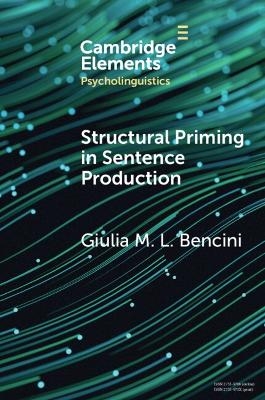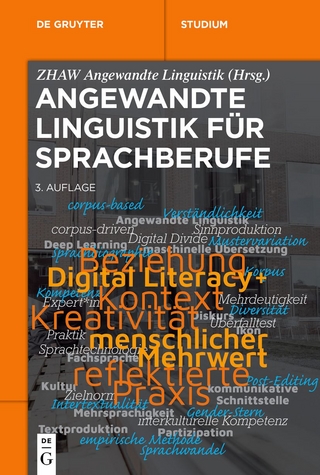
Structural Priming in Sentence Production
Seiten
2025
Cambridge University Press (Verlag)
978-1-009-23669-0 (ISBN)
Cambridge University Press (Verlag)
978-1-009-23669-0 (ISBN)
- Noch nicht erschienen (ca. Januar 2025)
- Versandkostenfrei innerhalb Deutschlands
- Auch auf Rechnung
- Verfügbarkeit in der Filiale vor Ort prüfen
- Artikel merken
This Element overviews structural priming research, on adult monolingual speakers, first language learners, second language learners, and bilinguals. Priming studies investigate linguistic representation and use in speakers of any age, sparking interest in continuity and life-long learning in language, second language acquisition, and bilingualism.
This Element provides an overview of structural priming research across the three main populations on which experimental priming studies have concentrated: adult monolingual speakers, first language learners, second language learners, and bilinguals. Priming studies with monolingual adults were originally designed to inform psycholinguistic models of grammatical encoding in language production. Thanks to the the implicit nature of the task, priming has turned out to be suitable for experimentally addressing questions about linguistic representation and use at the sentence level in speakers of any age. The view that priming is a form of implicit learning has sparked an interest in exploring continuity and life-long learning in language, opening up rich research areas in second language acquisition and bilingualism. Priming rightly deserves to be a part of every language scientist's tool kit.
This Element provides an overview of structural priming research across the three main populations on which experimental priming studies have concentrated: adult monolingual speakers, first language learners, second language learners, and bilinguals. Priming studies with monolingual adults were originally designed to inform psycholinguistic models of grammatical encoding in language production. Thanks to the the implicit nature of the task, priming has turned out to be suitable for experimentally addressing questions about linguistic representation and use at the sentence level in speakers of any age. The view that priming is a form of implicit learning has sparked an interest in exploring continuity and life-long learning in language, opening up rich research areas in second language acquisition and bilingualism. Priming rightly deserves to be a part of every language scientist's tool kit.
1. Introduction; 2. Structural priming in monolingual adults; 3. structural priming in first language acquisition; 4. Structural priming in second language acquisition and bilingualism; 5. Summary and conclusions; References.
| Erscheint lt. Verlag | 31.1.2025 |
|---|---|
| Reihe/Serie | Elements in Psycholinguistics |
| Zusatzinfo | Worked examples or Exercises |
| Verlagsort | Cambridge |
| Sprache | englisch |
| Themenwelt | Geisteswissenschaften ► Sprach- / Literaturwissenschaft ► Sprachwissenschaft |
| ISBN-10 | 1-009-23669-5 / 1009236695 |
| ISBN-13 | 978-1-009-23669-0 / 9781009236690 |
| Zustand | Neuware |
| Informationen gemäß Produktsicherheitsverordnung (GPSR) | |
| Haben Sie eine Frage zum Produkt? |
Mehr entdecken
aus dem Bereich
aus dem Bereich
Das umfassende Standardwerk auf der Grundlage der aktuellen amtlichen …
Buch | Hardcover (2024)
Duden (Cornelsen Verlag)
35,00 €
und wie man sie vermeidet
Buch | Softcover (2022)
C.H.Beck (Verlag)
14,00 €


